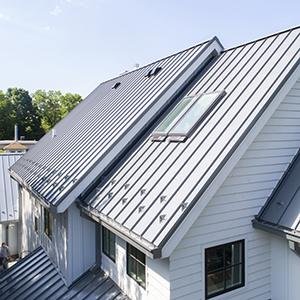Although making significant aesthetic adjustments to your home can be a lot of fun, it's easy to feel a little overwhelmed by all of the decisions you'll need to make during the process. Particularly difficult to decide upon is the flooring material to use. After all, it is not very simple to replace, and there are a great many things to take into consideration in addition to its appearance.
You should absolutely adore the appearance of your brand-new flooring, but you should also give some thought to its longevity, its functionality, and its level of safety. In terms of its long lifespan and low maintenance requirements, tile, whether it be ceramic or metal colored stone tile, is difficult to beat.
-
You are not the only one if, on the other hand, you are not entirely clear on the distinctions between ceramic tile and tile made of metal colored stone tile
-
Visually, they can be very difficult to differentiate from one another, and they have some characteristics in common
-
Natural stones such as slate, marble, limestone, travertine, and granite are the types that are utilized for flooring purposes the most frequently
-
Slate is a type of metamorphic rock that was originally a sedimentary rock but was changed over time by the application of natural heat and pressure
-
Marble, limestone, and travertine are all examples of sedimentary rocks, which means that they originated from the gradual and natural compression of fossil remains over an extended period of time
-
Granite, an igneous rock that formed as a result of the cooling and hardening of molten substances, is the rock that is the most crack-resistant and long-lasting; in fact, it is one of the hardest materials that is currently known to exist in the world
-
If you're looking for the best stone flooring for your home, you'll need to think about your finances, the aesthetic preferences you have, and the location in the house where the stone will be installed

The most durable and resilient flooring options for entryways, kitchens, and other high-traffic areas are slate and granite. Sealing your slate or granite floor should be done even if you don't think it's necessary because it will help protect it. The stone will maintain its "new" appearance for a longer period of time with the application of a coat of sealant, and it will also prevent any grout lines from becoming dirty.
Marble, limestone, and travertine are examples of softer stones that are appropriate for use in bathrooms and other areas of the house that do not experience a high volume of foot traffic. The porous nature of these softer stones necessitates that they be sealed in order to prevent stains from penetrating them.
The stone that is found naturally in the environment has a high natural resistance to the effects of weather and wear. It is also more valuable than ceramic tile because it cannot be easily replicated using synthetic materials. This makes it an extremely rare and desirable item. Ceramic tile is a better investment than natural stone flooring when it comes to increasing the value of your home. is typically regarded as being more valuable than ceramic tile due to the fact that it is one of a kind and more expensive.
In spite of the fact that natural stone's mottled surface and myriad of colors can be a source of aesthetic appeal, the design of a space can be complicated by these characteristics. In addition, natural stone flooring can be more difficult to maintain due to its naturally uneven surface, which makes it more difficult to apply sealant and cleaners in an even manner.
When deciding on a type of flooring, it is essential to take into account all of these different aspects. Ceramic tile and natural stone are both options that have the potential to be quite lovely; however, their aesthetic appeal will be overshadowed by problems if they are installed improperly or placed in an area that is not optimal for them.
Kiln-fired ceramic tiles, which are also known as porcelain tiles, are typically fashioned from either red or white clay. They are typically given a rating from one to five by the Porcelain Enamel Institute (PEI), which denotes the tile's tensile strength and its capacity to withstand the effects of foot traffic. The tile is able to withstand a greater amount of foot traffic in proportion to the PEI rating.
If you want the pattern of your flooring to be obvious and consistent, ceramic tile is a good choice to consider. Because ceramic tiles are not hardened by natural processes, they can be made to appear the same before being kiln-fired. This reduces the likelihood of individual tiles displaying color or pattern variations as a result of the firing process. Ceramic tile is typically more cost-effective than flooring options.
Glazed tiles are the best option for easy maintenance and cleaning. Glazed tiles have a sealant applied to them during the manufacturing process that makes them resistant to water and stains. As a result, you won't need to take any additional precautions to protect the flooring once it has been laid down.
Be sure to have unglazed tiles, which are stunning, especially when used in a rustic design scheme, sealed as soon as possible after the floor is installed. This is especially important if you choose to use unglazed tiles. Because unglazed tile is so susceptible to absorbing stains, you should avoid hosting events like wine tastings or spaghetti dinners in your home before you have the floors sealed.

